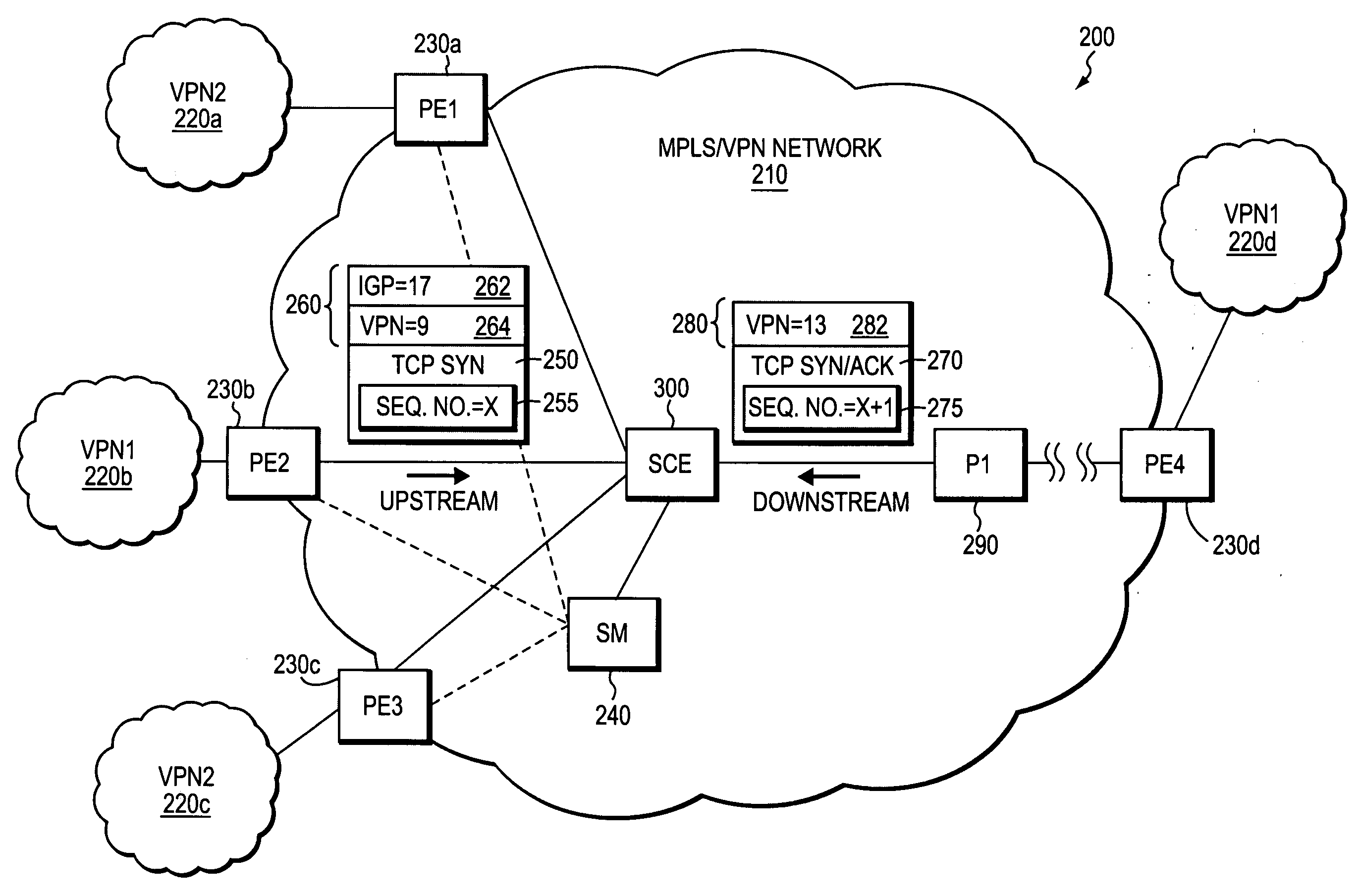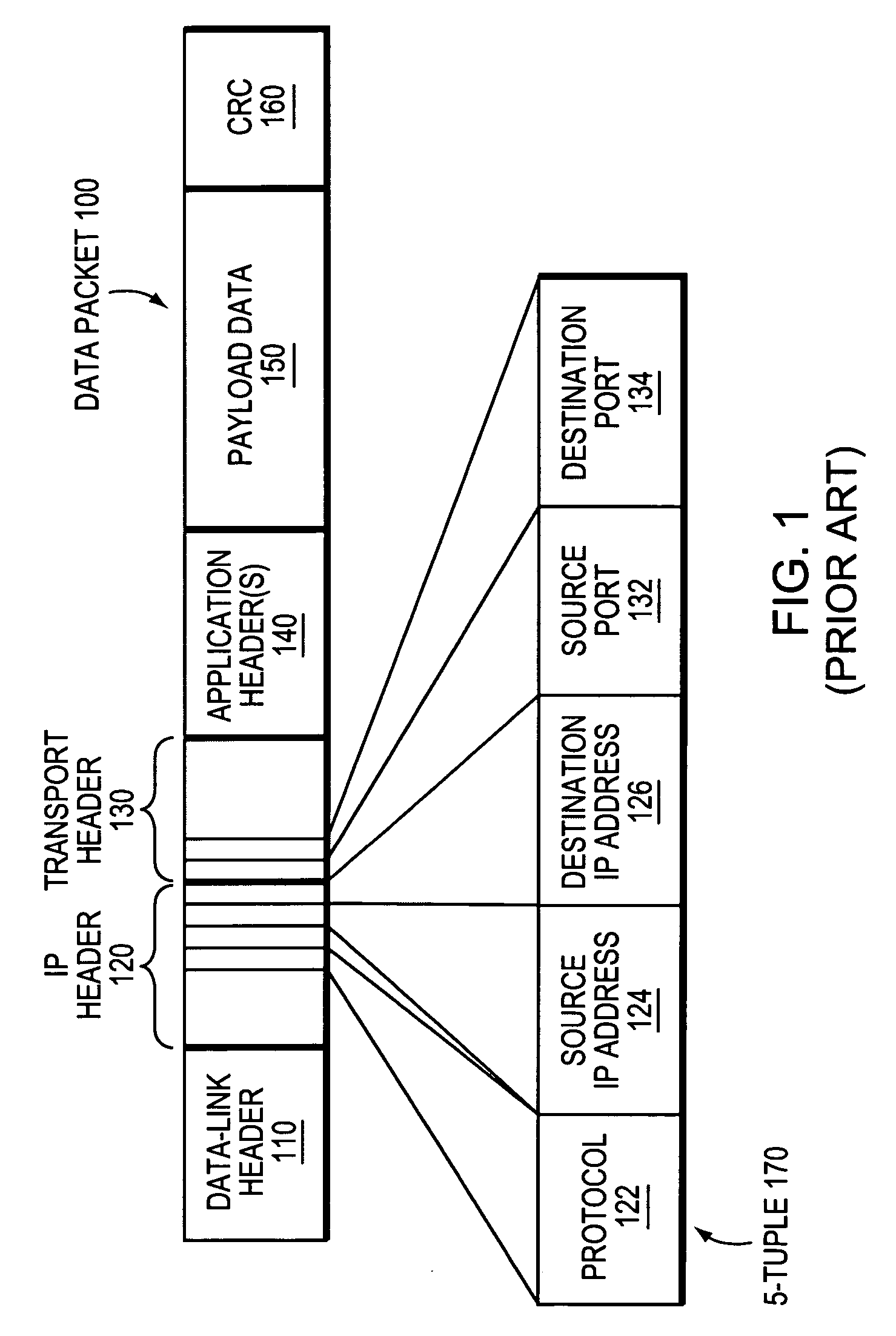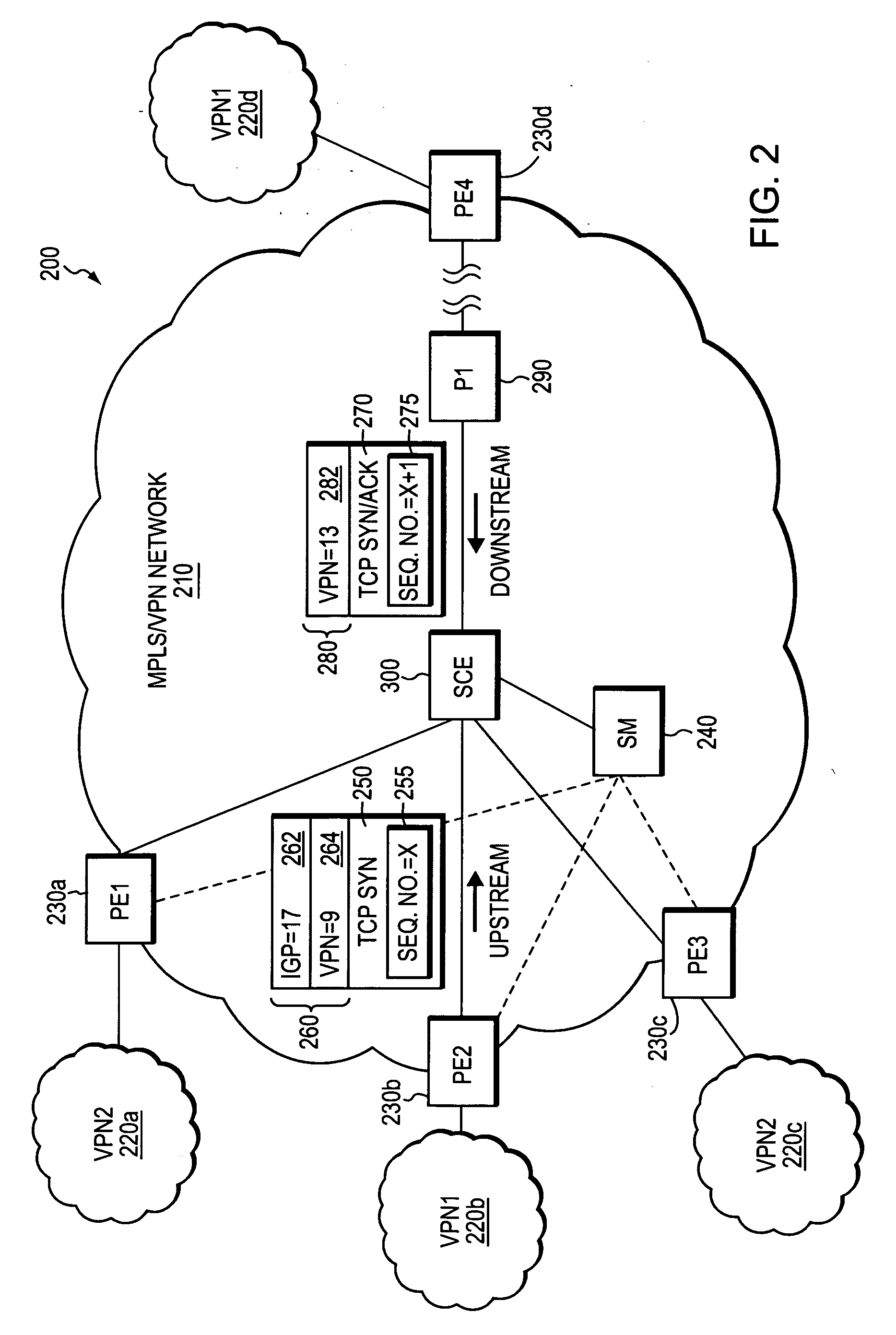Method and apparatus for self-learning of VPNS from combination of unidirectional tunnels in MPLS/VPN networks
a technology of mpls/vpn network and self-learning, applied in the field of computer networks, can solve the problems of dpi services applying the wrong set of application-level policies to the misclassified data packets, inadvertently misclassifying some data packets in different vpns, and the conventional 5-tuple flow-classification technique is generally ineffective in mpls/vpn network
- Summary
- Abstract
- Description
- Claims
- Application Information
AI Technical Summary
Benefits of technology
Problems solved by technology
Method used
Image
Examples
Embodiment Construction
[0044]FIG. 2 illustrates an exemplary computer network 200 in which an illustrative embodiment of the invention may be deployed. The network 200 includes an exemplary MPLS / VPN-configured provider network 210 (“provider network”) that is coupled to a plurality of neighboring customer sites 220. For example, as shown, the provider network 210 includes provider-edge devices PE1230a, PE2230b, PE3230c and PE4230d, which are respectively coupled to the neighboring customer sites 220a, 220b, 220c and 220d.
[0045] Each of the customer sites 220 may be configured to participate in one or more VPNs, whereby customer sites participating in the same VPN can exchange data with one another via the provider network 210. By way of examples the exemplary computer network 200 includes the customer sites 220b and 220d that participate in a first VPN (VPN1), and the customer sites 220a and 220c that participate in a second VPN (VPN2), which is different than the first VPN. The provider network 210 may ...
PUM
 Login to View More
Login to View More Abstract
Description
Claims
Application Information
 Login to View More
Login to View More - R&D
- Intellectual Property
- Life Sciences
- Materials
- Tech Scout
- Unparalleled Data Quality
- Higher Quality Content
- 60% Fewer Hallucinations
Browse by: Latest US Patents, China's latest patents, Technical Efficacy Thesaurus, Application Domain, Technology Topic, Popular Technical Reports.
© 2025 PatSnap. All rights reserved.Legal|Privacy policy|Modern Slavery Act Transparency Statement|Sitemap|About US| Contact US: help@patsnap.com



